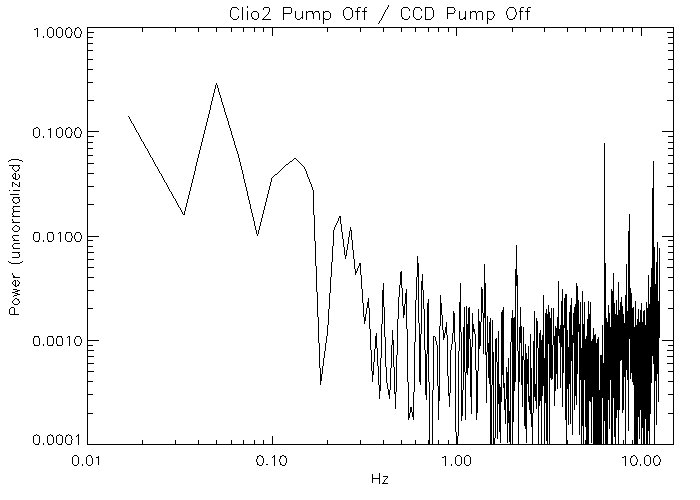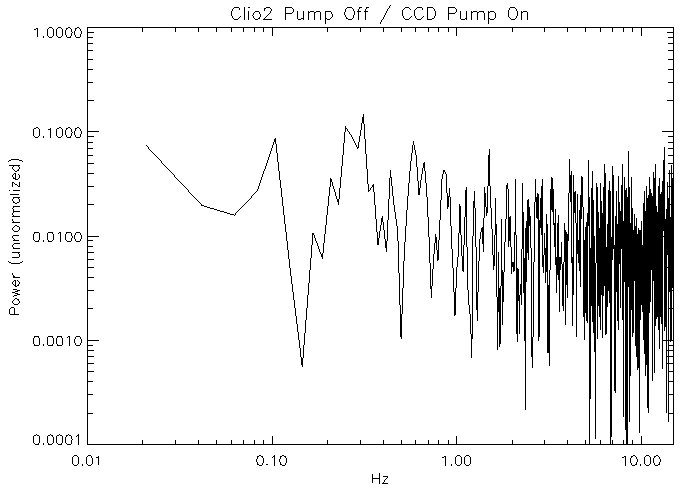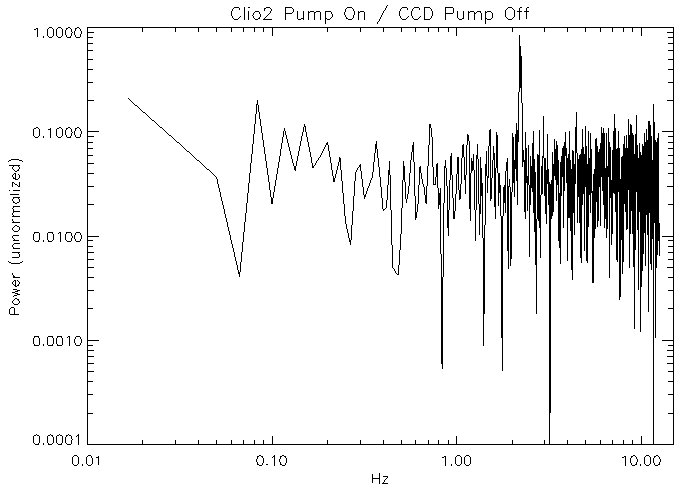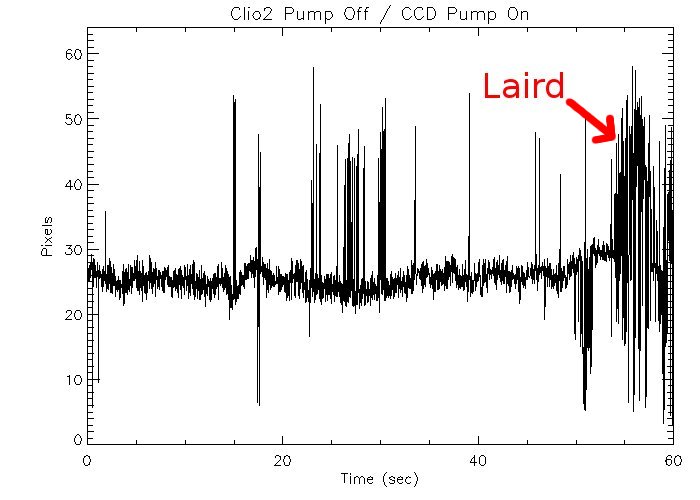Our CRO is a very fast f/1 optic, and our ASM makes an f/16 beam. So motions of the CRO are amplified by a factor of 16 in our focal planes. We can see this on the VisAO CCD47 as a dancing image due to small mechanical vibrations of the telescope.
The MagAO project is adding a little bit to the vibrations of the telescope, mainly with two cooling pumps. One pump circulates glycol for our CCDs and the Shutter, and the other keeps Clio2 cold. With the 16x CRO amplification, we really see the impact of these pumps. We recorded 60 sec time series of the CCD47 operating at 32Hz in a 64×64 subarray mode. Here are the results:
With both pumps off:

With the Clio2 pump off, and the CCD pump on:

With the Clio2 pump on, and the CCD pump off:

We are actually very happy with the vibration performance of the system attached to Clay. Taking into account the factor of 16 for the CRO reflection, we expect to have only a few milli-arcsec of jitter when we observe actual stars. We have also taken measurements with our internal artificial star without the CRO and confirmed this. Good news, especially for VisAO.
Another experiment we conducted was having the PI bounce around the control room. He has a noticeable effect.
